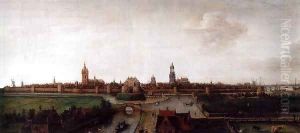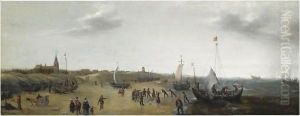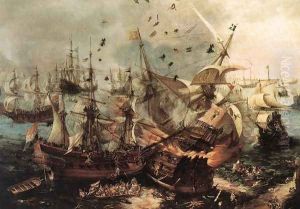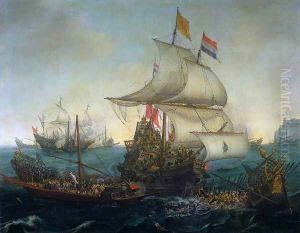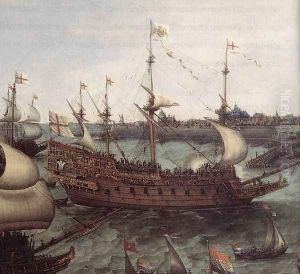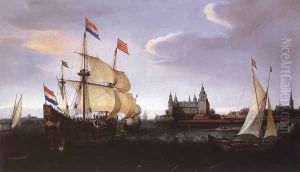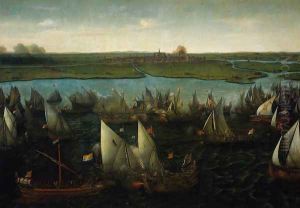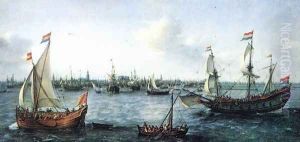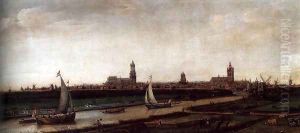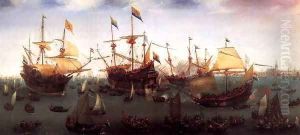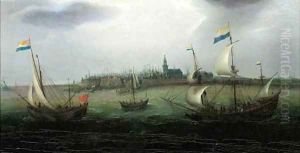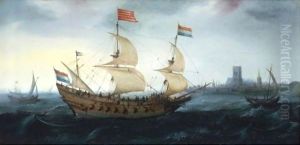Hendrick Cornelisz. Vroom Paintings
Hendrick Cornelisz. Vroom, born in Haarlem, Netherlands, in 1566, is recognized as one of the pioneers of Dutch marine painting, a genre that became highly significant in Dutch Golden Age art. His work laid the foundational elements for this genre, blending detailed observation of the sea with a keen interest in the narrative aspects of marine subjects. Vroom's early life was marked by extensive travels, which significantly influenced his artistic development. He journeyed through the Mediterranean, visiting Italy, where he was exposed to the works of leading Italian artists, and this exposure is evident in the sophistication of his compositions and the dynamism of his seascapes.
Vroom's career progression was notably shaped by his return to the Netherlands, where he established himself as a marine painter. His works from this period demonstrate a remarkable ability to capture the intricacies of sea battles, the bustling activity of Dutch harbors, and the expansive calm of the open sea, all of which were subjects of great national pride and commercial significance in the Netherlands during the 17th century. Vroom's paintings are characterized by their meticulous detail, vibrant color palette, and the skillful depiction of water and light, elements that would come to define Dutch marine art.
Throughout his career, Vroom received numerous commissions from the Dutch government and private patrons, reflecting his reputation as a leading artist in his field. His contributions to marine painting influenced subsequent generations of Dutch artists, including Willem van de Velde the Elder and Younger, who are also celebrated for their marine works. Vroom's legacy is not only in the paintings he left behind but also in his role in establishing marine painting as a respected and cherished genre in Dutch art.
Hendrick Cornelisz. Vroom passed away in Haarlem in 1640. His works continue to be admired for their historical value and artistic merit, offering insight into the maritime culture of the Dutch Golden Age and the early development of marine painting as a distinct genre in European art.
